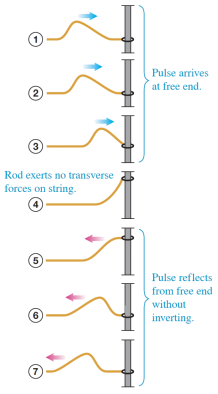Physics 1B: Midterm 1 PROBLEM 1
Rombes Physics 1B: Midterm 1 PROBLEM 1
You must show your work to receive credit. An answer written down with no work will receive no credit.
Problem 1
30 points
In some diatomic molecules, we can model the force that one atom exerts on another as

where r is the separation of the molecules, and A and B are some constants.
(a): 10 points
Find the equilibrium separation r0 of the atoms.
You must show your work to receive credit. An answer written down with no work will receive no credit.
(b): 10 points
Show that, if  (i.e. the atoms are close to their equilibrium separation), the motion of the atoms will be approximately simple harmonic.
(i.e. the atoms are close to their equilibrium separation), the motion of the atoms will be approximately simple harmonic.
You must show your work to receive credit. An answer written down with no work will receive no credit.
(c): 10 points
Determine the frequency of the simple harmonic motion.
You must show your work to receive credit. An answer written down with no work will receive no credit.
Problem 2
40 points
Consider a rope of length L, tension T and mass per unit length µ that is held down (fifixed) at the left end, and the right end is free to move, such as the one shown in this diagram:

A wave described by the wave function y(x, t) with such a free end must satisfy  at the free end of the string. Find the allowed frequencies of the standing waves on this string in terms of µ, T, and/or L.
at the free end of the string. Find the allowed frequencies of the standing waves on this string in terms of µ, T, and/or L.
You must show your work to receive credit. An answer written down with no work will receive no credit. This page is intentionally left blank.
You must show your work to receive credit. An answer written down with no work will receive no credit.
Problem 3
30 pts
(a): 10 pts
You visit the Liberty Bell on your trip to Philadelphia. While the guards aren’t looking, you decide to test its oscillatory properties. You pull the bell back and let it go, noting that it takes 2 seconds to complete a full oscillation. You again grab the bell and pull it back 10% further. This time, it takes 2.2 seconds to complete a full oscillation. Can you describe the motion of the bell as simple harmonic? Explain your answer.
You must show your work to receive credit. An answer written down with no work will receive no credit.
(b): 10 pts
Which, if any, of the following functions are valid pressure wave functions to describe a sound wave in open air (not necessarily in a tube)?

Here p0, A, and B are constants. Justify your answer. If the answer is yes for any of them, solve for the speed of the wave in terms of p0, A, and/or B.
You must show your work to receive credit. An answer written down with no work will receive no credit.
(c): 10 pts
For my wedding this summer, I opted for a subwoofer (speaker) that emits sound at a power of 20 W. The DJ warned me not to sit my grandma near the subwoofer. The threshold of painful sound is 120 dB. Assuming that the speaker emits sound in a spherically symmetric manner, how far does grandma need to sit away from the subwoofer so that she isn’t in pain?
2021-04-28